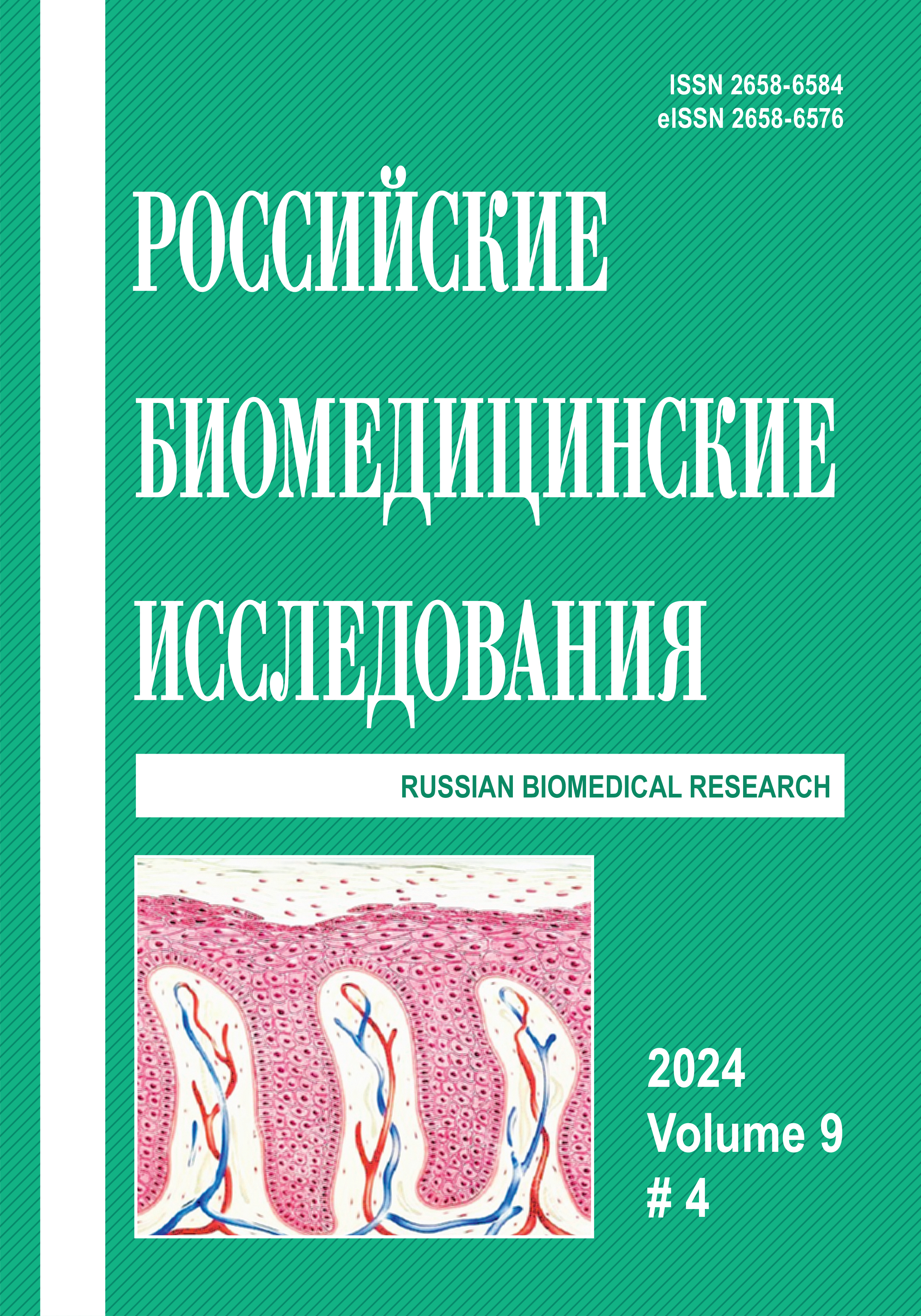INFECTIVE AGENTS IN FIXED ANATONICAL MATERIALS
Abstract
The program of pre-graduate and postgraduate medical education involves the use of cadavers to teach anatomy by autopsy or examination of dissected samples. The preservation process of the biomaterial must ensure that it is free from damage, destruction and decomposition. Preservative solutions are used for this, but it remains unclear whether there is any risk of spread. microorganisms during the teaching of anatomy, research and autopsy procedures of fixed corpses. The results showed that the fixed cadaveric material, as well as preservative solutions, contain viable micromycetes. The study of the pathogenicity factors of fungi isolated from anatomical preparations showed that more than 80% of fungal strains have hydrolytic activity. This study highlights the importance of developing safe manipulation protocols to avoid possible infection and illness of staff and students.
References
Anton H., Al-Ghoshae H., Chandra M., Baobaid M.F. et al. Formalin Resistant Fungi Isolated from Cadavers at a Medical School’s Dissection Hall in Malaysia. Asian J Med Health Sci. 2022;5(1):55–62.
Михайлов В.И., Андреева С.А., Карелина Н.Р., Яценко Е.В. Новый этап в изучении анатомии человека: проблемы и их решение с помощью современных методов визуализации. Forcipe. 2022;5(3):15–32.
Никонорова М.Л., Карелина Н.Р. Медицинские электронные ресурсы на практических занятиях по анатомии человека. Педиатр. 2014;5(4):140–145. DOI: 10.17816/PED54140-145.
Цинзерлинг А.В., Цинзерлинг В.А., Ариэль Б.М. и др. Современные инфекции. Патологическая анатомия и вопросы патогенеза. СПб.: Сотис; 1993.
Алексеев В.В., Алипов А.Н., Андреев В.А. и др. Медицинские лабораторные технологии. Т. 2. М.: ГЭОТАР-Медиа; 2013.
Ramesh G., Katiyar A., Sujatha R., Raj A., Gupta B., Kumar A. Detection of microorganisms on formalin-fixed and stored pathology tissues: A microbiological study. J Oral Maxillofac Pathol. 2021;1:64–69.
Osman N.A., Abdeen S.M., Edriss A.A., Sulieman A.A. Identification of fungal growth in formalin fix human cadaver among Faculties of Medicine at Khartoum. Stat Nat Sci. 2014;12(11):64–67.
Hayashi S., Homma H., Naito M. et al. Saturated salt solution method: a useful cadaver embalming for surgical skills training. Medicine (Baltimore). 2014;93(27).
Claudio Molina, Liliana Berrocal, Matías R. et al. Identification of bacterial and fungal species in human cadavers used in anatomy teaching. Int J Morphol. 2019;37(2):473–476.
База данных MYCOBANK. Доступен по: https://www.mycobank.org/ (дата обращения: 27.03.2024).
Paterson R.R.M., Bridge P.D. Biochemical techniques for filamentous fungi. Int. J Mycol Instit. 1994;1:21.
Кузикова И.Л., Медведева Н.Г. Оппортунистические грибы — контаминанты среды обитания человека и их потенциальная патогенность. Экология человека. 2021;3:4–14.
Карпунина Т.И., Олина А.А., Машуров М.Г., Чемурзиева Н.В., Драбкова В.А. Фосфолипазы оппортунистических грибов: их возможная роль в патогенезе и диагностике микозов. Проблемы медицинской микологии. 2006;8(6):41–46.
Vesper S.J., Dearborn D.G., Yike I., Sorenson W.G., Haugland R.A. Hemolysis, toxicity, and randomly amplified polymorphic DNA analysis of Stachybotrys chartarum strains. J Appl Environ Microbiol. 1999;65:3175–3181.
Copyright (c) 2024 Russian Biomedical Research

This work is licensed under a Creative Commons Attribution 4.0 International License.



